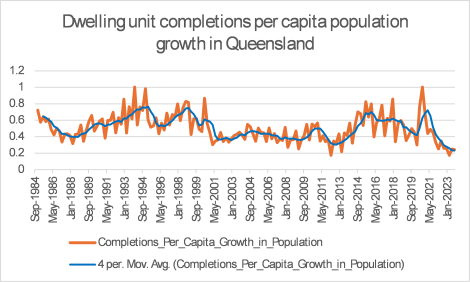 Shifting cost of welfare housing on to developers won’t fix anything
Shifting cost of welfare housing on to developers won’t fix anything
The state government’s Housing Availability and Affordability (Planning and Other Legislation Amendment) Bill 2023 will make housing neither more available, nor more affordable, according to the Australian Institute for Progress.
“The act will put a cost impost on new home buyers by mandating a proportion of new developments be devoted to social and affordable housing which will transfer costs which ought to be incurred by the government onto the buyers of the remaining homes,” according to Executive Director Graham Young.
“If 20% of a development has to be devoted to houses to be rented or sold below market prices, then the remaining 80% will have to be sold at higher than market prices, or the deal won’t stack up.
“That represents a tax being put on new home buyers that should be borne by the community as a whole, if it needs to be borne at all.”
Mr Young said that the act represented just one more false promise that government intervention will solve the housing supply problem.
“As the graph at the top shows, we have been building fewer and fewer houses compared to the growth in our population since the 90s, a period when housing was quite affordable. This is not sustainable.
“Labor has been particularly bad at providing housing supply in the last 25 years with the only time numbers approaching the 90s being under the Newman government. The last peak was courtesy of the Morrison government’s HomeBuilder scheme. It is now the worst it has ever been.”
Mr Young said that the fall in building completions in the late 90s coincided with the introduction of the Integrated Planning and Assessment Act in 1997 and had been exacerbated by changes since.
“It also coincides with an increase in taxes and charges on new developments, transferring responsibility for a range of infrastructure and services from the community to the buyers of new land.
“This legislation continues that trend, and therefore we should expect a further deterioration in housing availability, and the impact will be felt mostly by people in the middle demographics, further hollowing out the middle-class.”
Mr Young did however commend the government on its intention to acquire land and easements for infrastructure.
“But it should be looking to go much further and plan to upgrade infrastructure and services so as to facilitate new green fields developments rather than concentrating on in-fill.
“We have a crisis with hundreds of thousands of migrants arriving added to natural population growth, and this will not be fixed in any reasonable time frame by subdividing blocks in the middle suburbs.
“In the last year we needed to build approximately 65,000 houses just for population growth and built 33,000 instead, including replacement of existing stock – that means our rate of building needs to increase 100%
“This legislation won’t achieve that.”